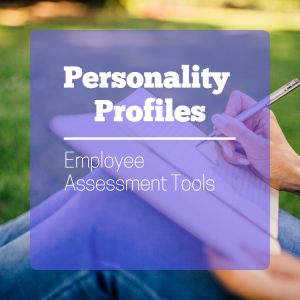Improve your employee assessment tools today with these 3 tips.
Post updated for freshness. Originally written by Rebecca Whittenberger on 9/3/14.
Your corporate budget is getting tight and you have seen a big dip in product sales. All signs point to pulling out some employee assessment tools, like performance evaluations, to measure staff engagement and get to the root of the problem.
If this scenario sounds familiar, it probably is.
According to a Gallup study, on average less than 33% of employees are engaged in the work day — that is a lot of people left just warming their chair. This is bad news for your bottom line, because disengaged employees lose your company tons of profits. Gallup points out that “disengaged employees cost the American economy up to $350 billion per year in lost productivity.”
Defining the problems with employee assessment tools
Traditionally, performance evaluations are the “go to” tool used by HR departments to measure employee engagement and productivity. Unfortunately, many of these appraisals are only scheduled once a year. That leaves a lot wasted time in between evaluations that managers could be using to stay connected to their employees’ immediate needs, behaviors, and attitudes.
We should not be waiting an entire year to troubleshoot or provide some necessary redirection.
More problems with performance evaluations include their low degree of reliability and validity and even resistance from those people who are being evaluated (Employee Evaluation and Performance Appraisals, Kleiman and Simmering). If the people you’re trying to evaluate are hostile to the tool you’re using, chances are you are not going to get very accurate or effective results.
Improving your evaluations with 3 key steps
Whether you keep using traditional performance appraisals to evaluate employee engagement or decide to switch to cutting-edge tech tools, here are three steps to make your performance appraisal tools as effective as possible (from Kleiman and Simmering’s article):
#1 – Identify
For any evaluation process to be effective, you must identify exactly what you’re looking for. From specific skills and behaviors to who is actually responsible for ranking employee performance, you must narrow your focus to specific elements and people to get the data you want.
Fresh ideas can include asking peers to help evaluate their coworkers (in addition to direct supervisors), asking employees to “rate themselves,” and making sure all job descriptions are up-to-date with detailed descriptions on exactly what is expected of an employee’s performance.
#2 – Measure
Relevant forms and clear rating standards are the main keys to effective measurement. Your form is the foundation for the evaluation and outlines the performance elements and the rating scale used to judge that performance. Make sure your form includes these aspects.
Employees should not be surprised by any of the performance indicators on an appraisal form – they should have received detailed expectations in their job descriptions when they were first hired. Clear criteria help direct employee behavior much better, and the wording on the performance evaluation should echo that on the job description.
For example, the phrase “employee works quickly” is much more vague than the phrase “loads a truck in less than an hour.” Use descriptive, detailed phrases on both forms and job descriptions for accurate measurement.
#3 – Manage
Of course, the point of any evaluation is to gather information and then offer your employees feedback on how they can improve, change, or stick with their current performances.
To make this feedback really effective, make sure you’re practicing two-way communication: after employees receive their evaluation, ask if they have any questions or comments. The goal is to get your employees to fully understand and accept your evaluation, and they should be allowed to participate in the conversation.
This part of the management process can also include specific goals and objectives for employees to work on prior to the next performance review.
Saving Paper; Trying Tech
If you’re tired of using paper-based evaluation forms, you should take a look at tech communication tools like Ving. To help you get started with Ving check out our template library here.






Leave a Comment